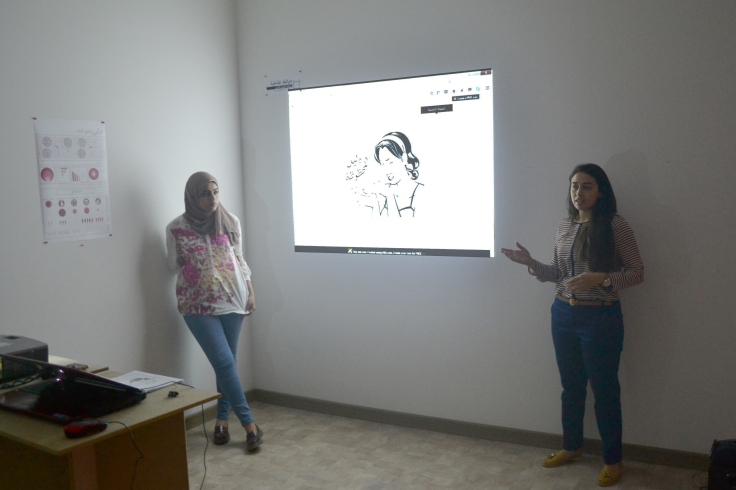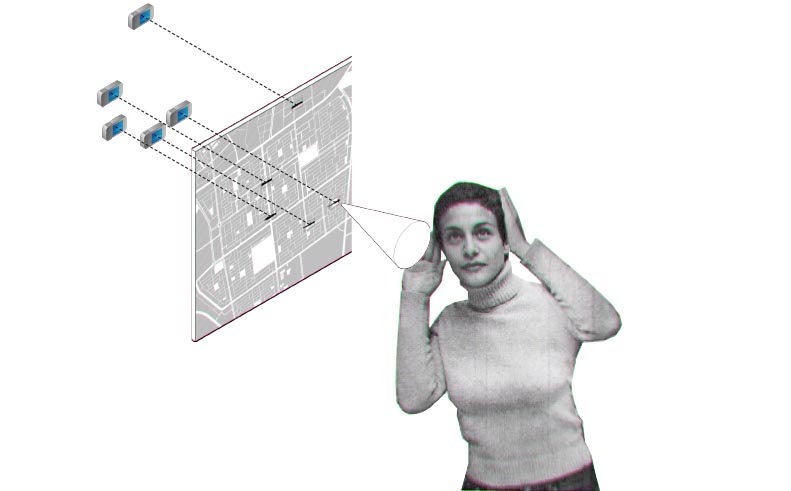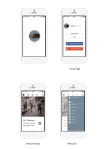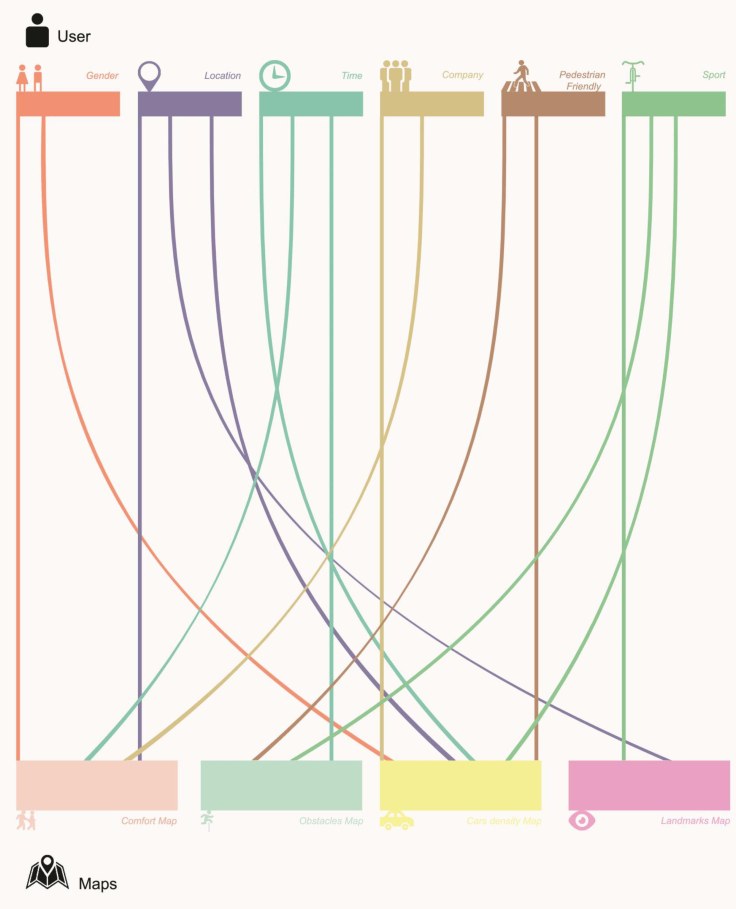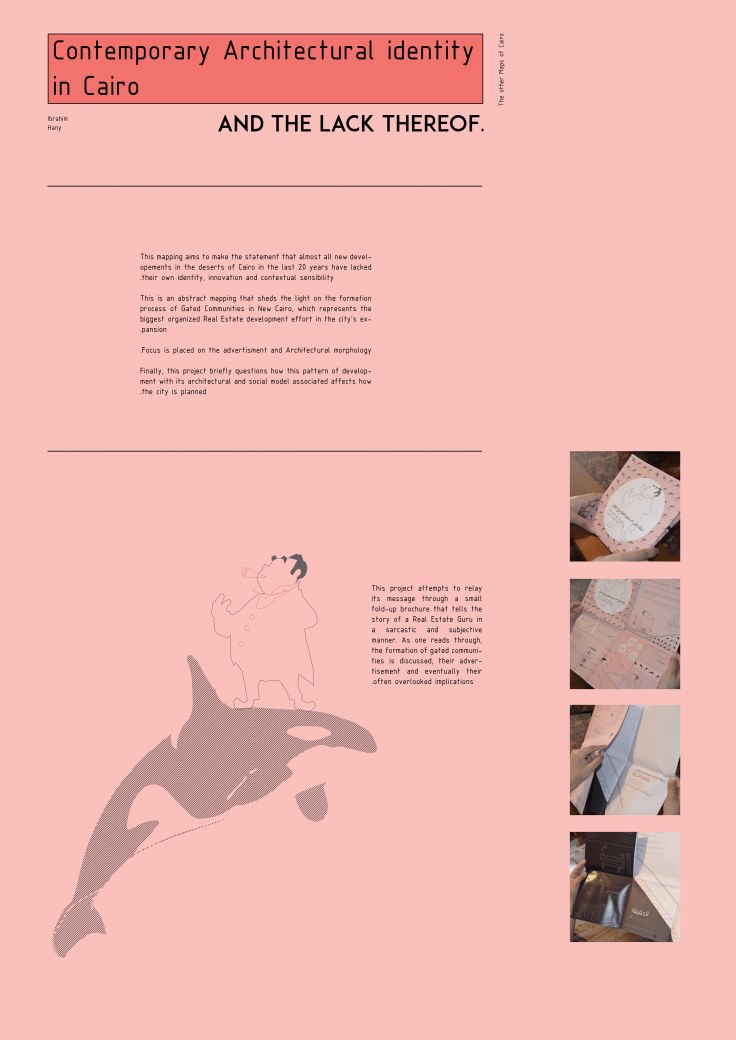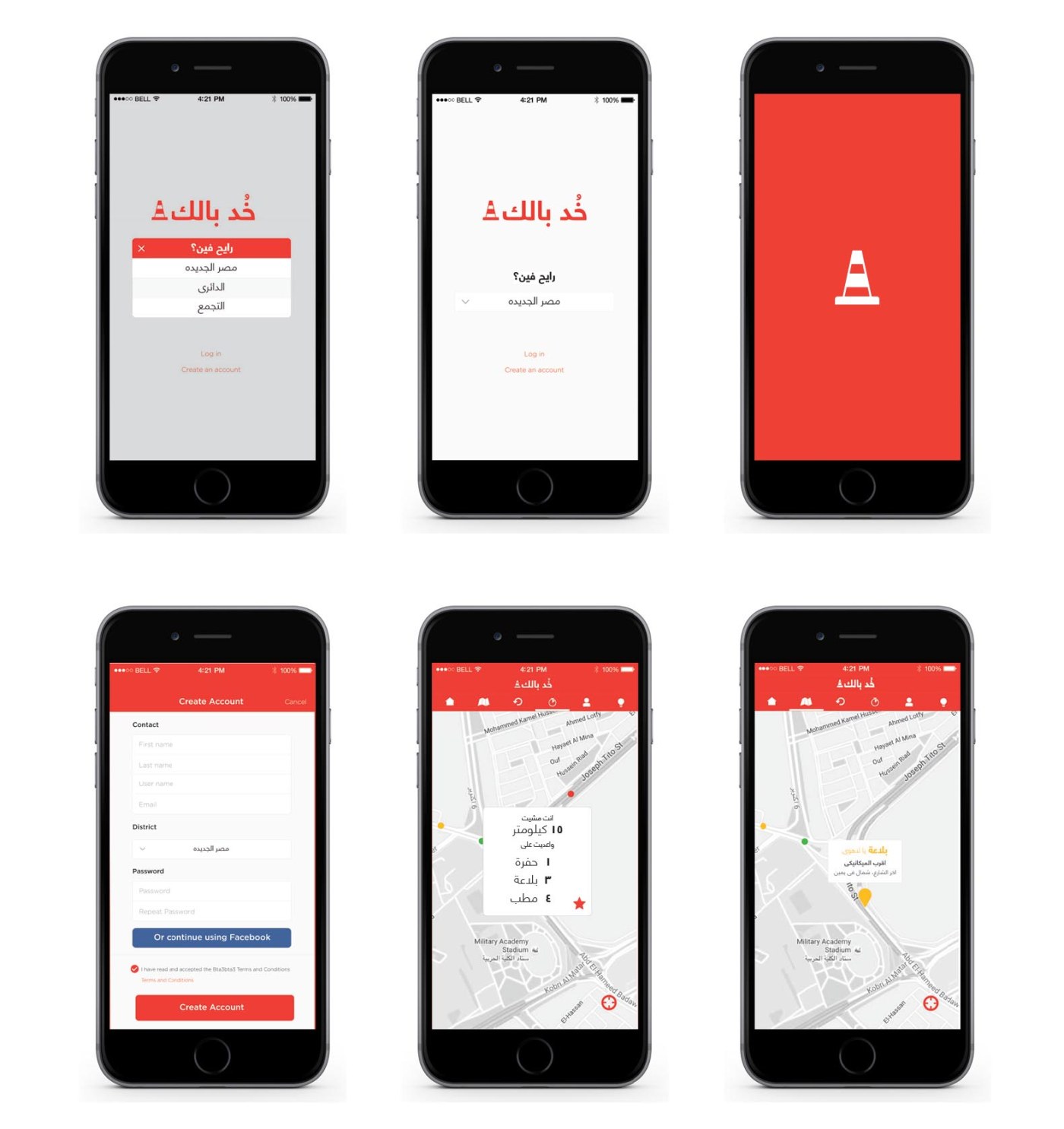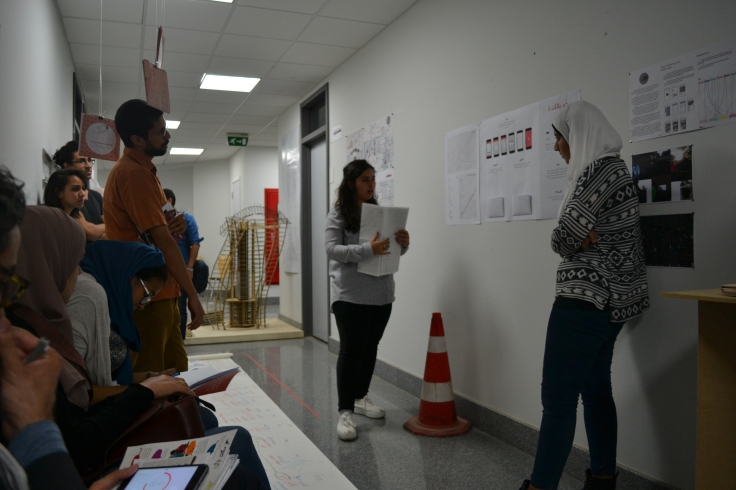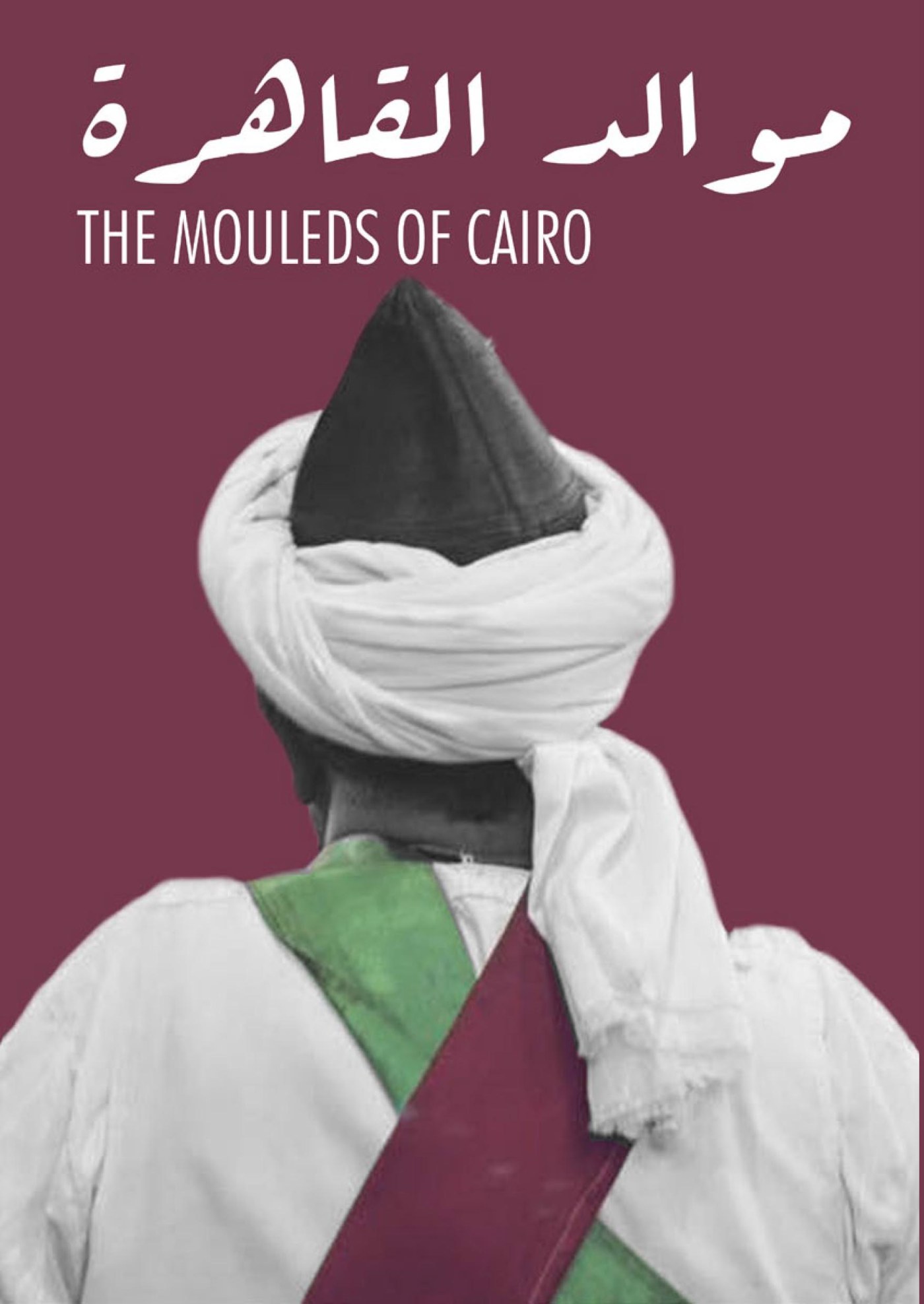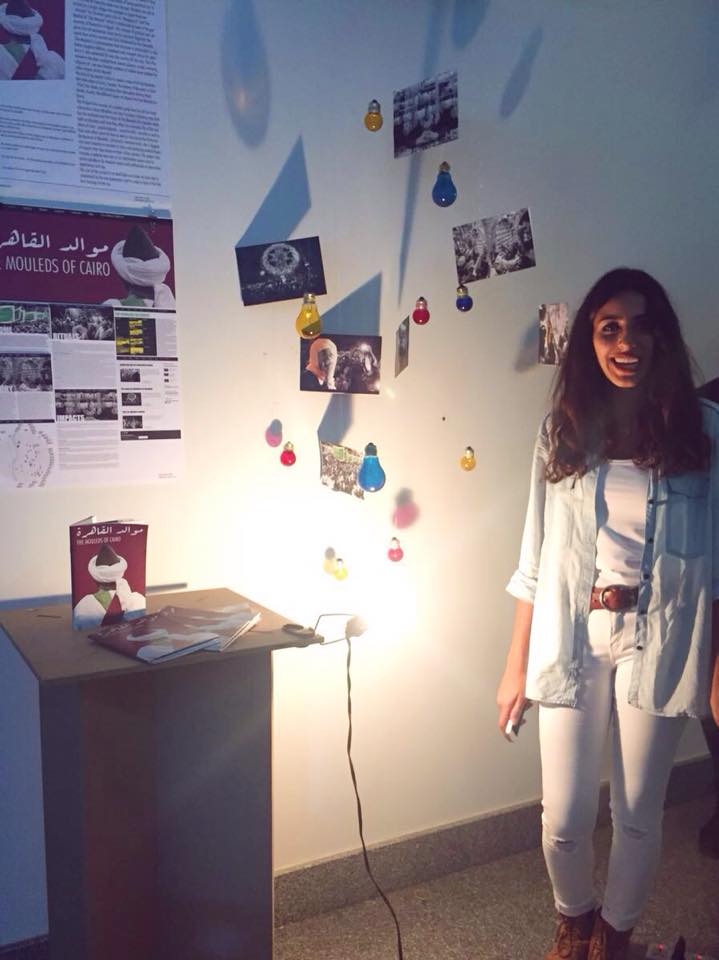A project by Dalia Gamal and Menna Essam
Maps and the art of mapping are models of concision, it raps up everything that surrounds us in the world. Starting from the zoomed out map (world map) to the zoomed in maps which are the most detailed ones such as mind map, emotional maps and daily life mapping.
Today maps are represented in different ways and mediums not only a 2D drawings on papers, but now there is applications, short films, online websites, etc.
We as human use our “spatial abilities”, which are skills we use to manipulate 3D shapes and geometric information in our heads.
According to Geographer Amy Lobben of the University of Oregon, in 2007, discovery which was finding out the “self-location” is the most important “spatial-ability” key for map reading, the ability to relate where you are in the real world to corresponding spot on a map by observing roads, building and intersections.
We decoded to transform a 2D map into 3D map, because it’s easier to read and understand it and because people find a 2D maps are boring and non-interactive like 3D ones. We came up with a game to help people visualize the places and streets they have been there before and draw and recreate their own 2D maps in their own heads according to their experience.
“ What I would love to do is to personalize navigation systems based on simple cognitive tests that determine what really need to help you navigate better.” Amy Lobben, compensating for individual difference in perspective shifting will require more research to better understand the nature of the difficulty, Lobben says. The sorts of things that might help, she suggests, include features that zoom smoothly in and out from the street view to map view, or circles and arrows that indicate a user’s currant location and heading.
Combining brain science and cartography could also lead into other interesting areas. For examples, in some of their FMRI studies Lobben and her colleagues have noticed interesting activity in the par hippocampal place area, a brain region that seems to respond preferentially for images of places. Other researchers have found that the PPA, as it’s known for short, fires up when people view photos of rooms, city streets, famous landmarks, and all sorts of other places.
Creating this game was determined to achieve those reasons and more:
-Helps people to memorize street names.
-Testing knowledge that people have about street names, it’s history, it’s location and the reason for choosing the name.
-Entertaining people with something useful and related to their work, residence, life and city.
-Rediscover neighborhoods and city that people are surrounded by.
-Nourishing people’s memory about places and their locations.
Inspiration
Inspired by crossword puzzle one of the most popular games in the world, found in newspaper and recently online and in applications on smart-phones. It helps people to nourish their memory and think more to guess the words and solve the game and being a useful time investment and entertainment. A CROSS STREETS GAME came up. A game that could be found in newspaper or online, to be easily found and played anywhere and anytime.
The game contains photos and clues about the streets, and by following them the player should be able to know the street name in order to solve it and figure out the hidden clue. The game has different levels of complexity to be more challenging, specially when played as a group game. Human are able to imagine and recognize 3D physical shapes better than 2D elements. From this the game was designed to be solved by following the clues which are attached to the game and all of them are 3D physical elements such as places or buildings people might have been in or around them before.
Transformation
Following the idea/form of the crossword puzzle, the game form/shape was designed. People will find empty squares on the board and by the help of the photos and the hidden clues they should be able to recognize the street name. After filling all the empty squares, another street name will start to appear and this is the final name they should figure it out before flipping the board. The last name does not have a direct clue or information like the other names. The only way to figure is by solving all the puzzle.
Finally, after finding out the last name which is crossing all the other name. The player can flip the board to get the information about the street like it’s history, important buildings in the street and reason behind the name.
The game has different levels and each level is more difficult than other and is about a different area. Till they complete Cairo.
